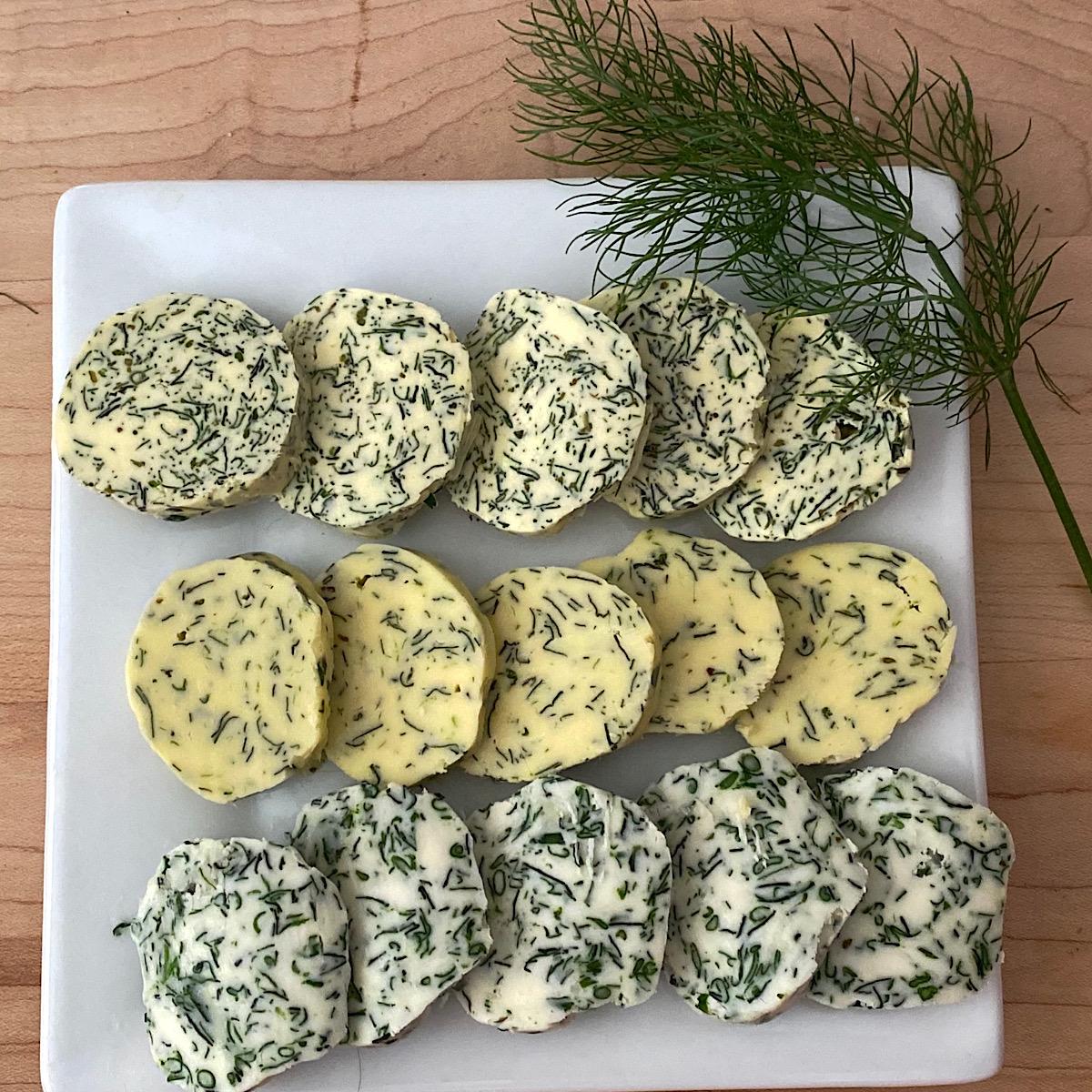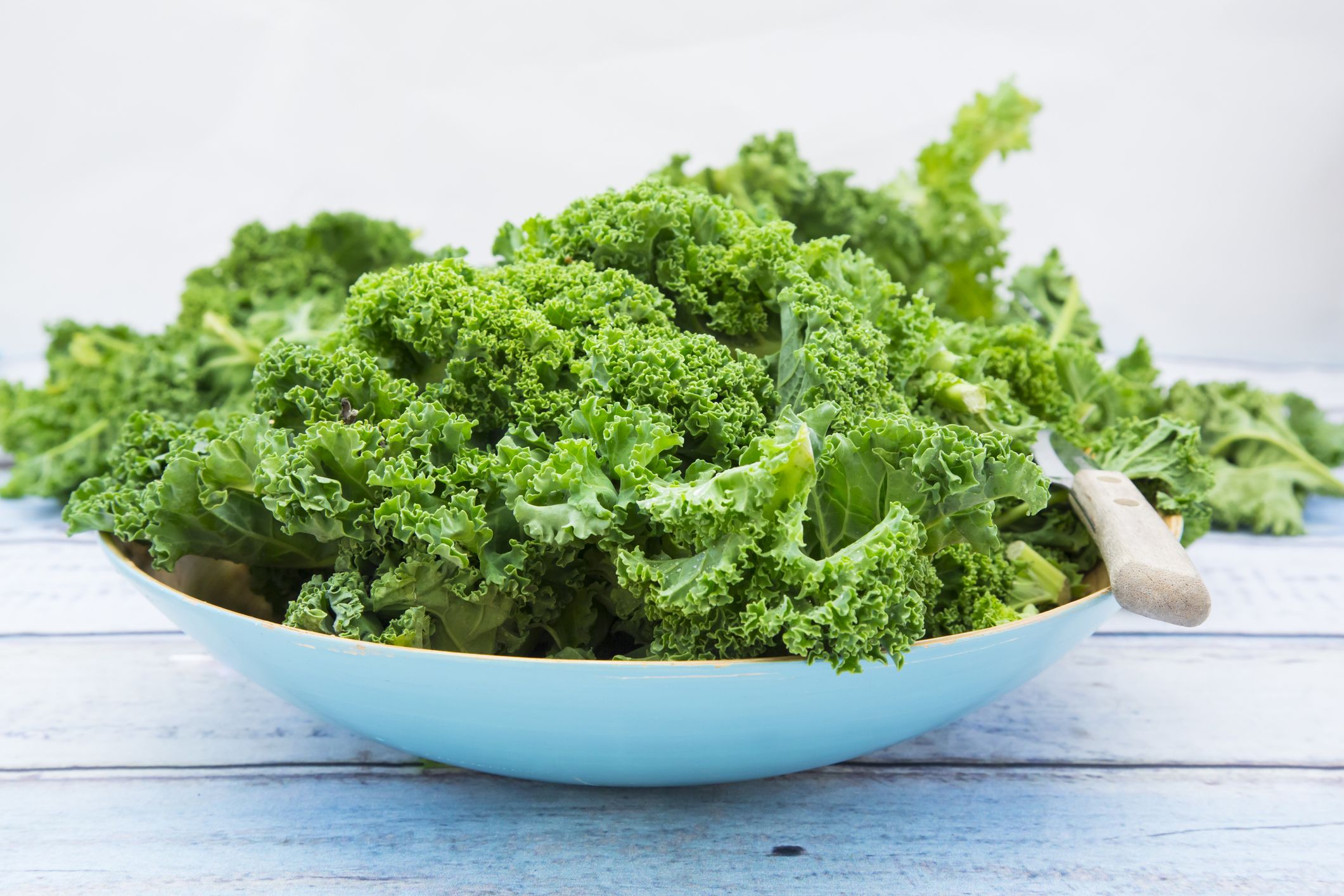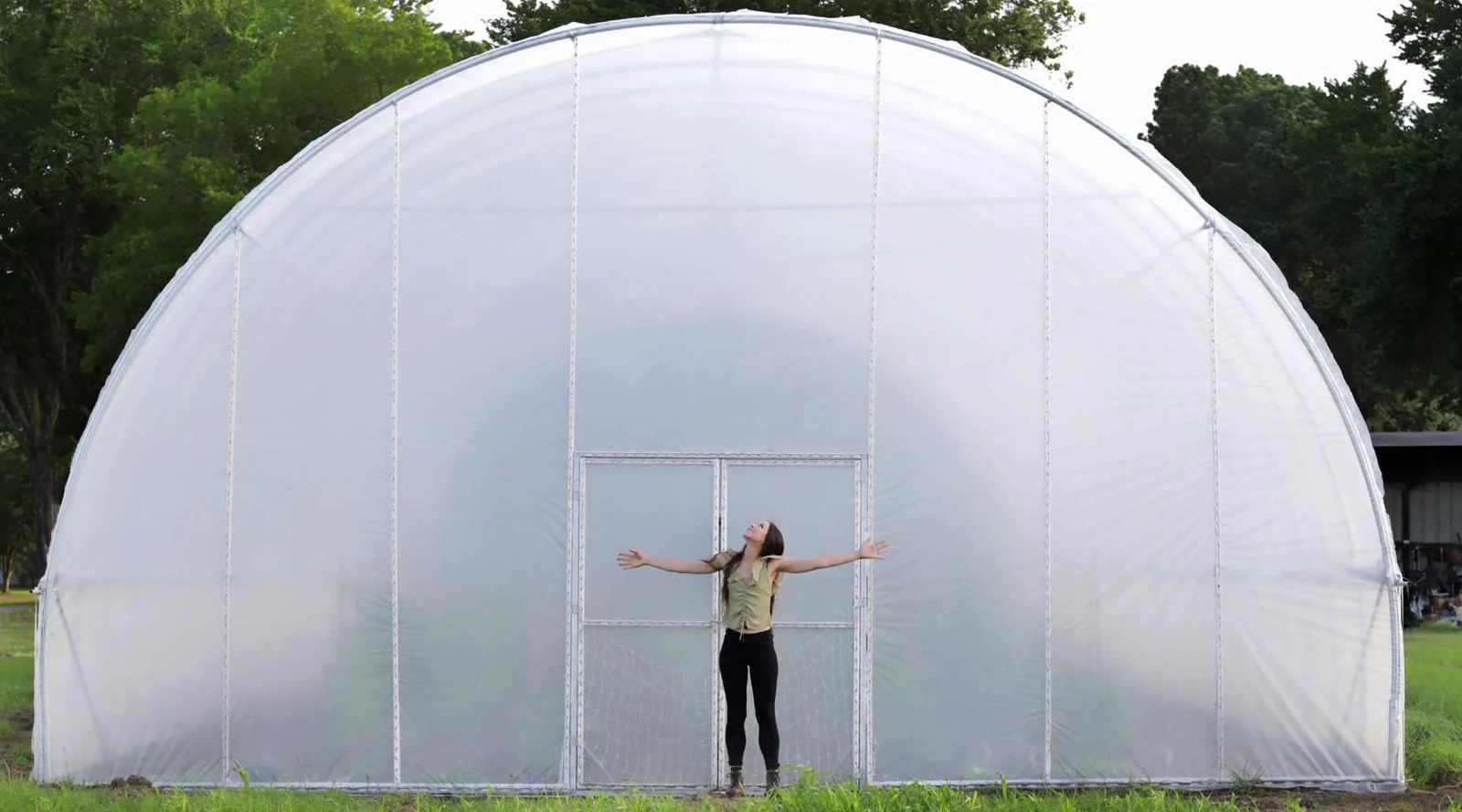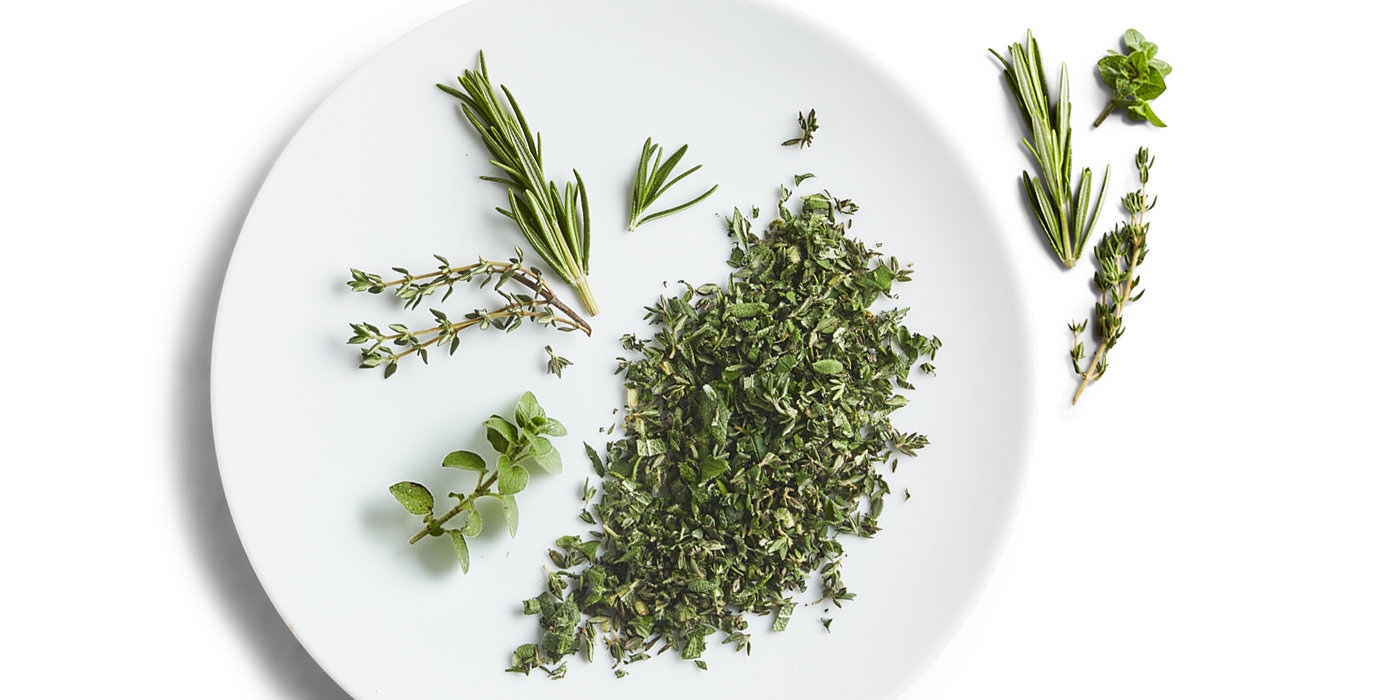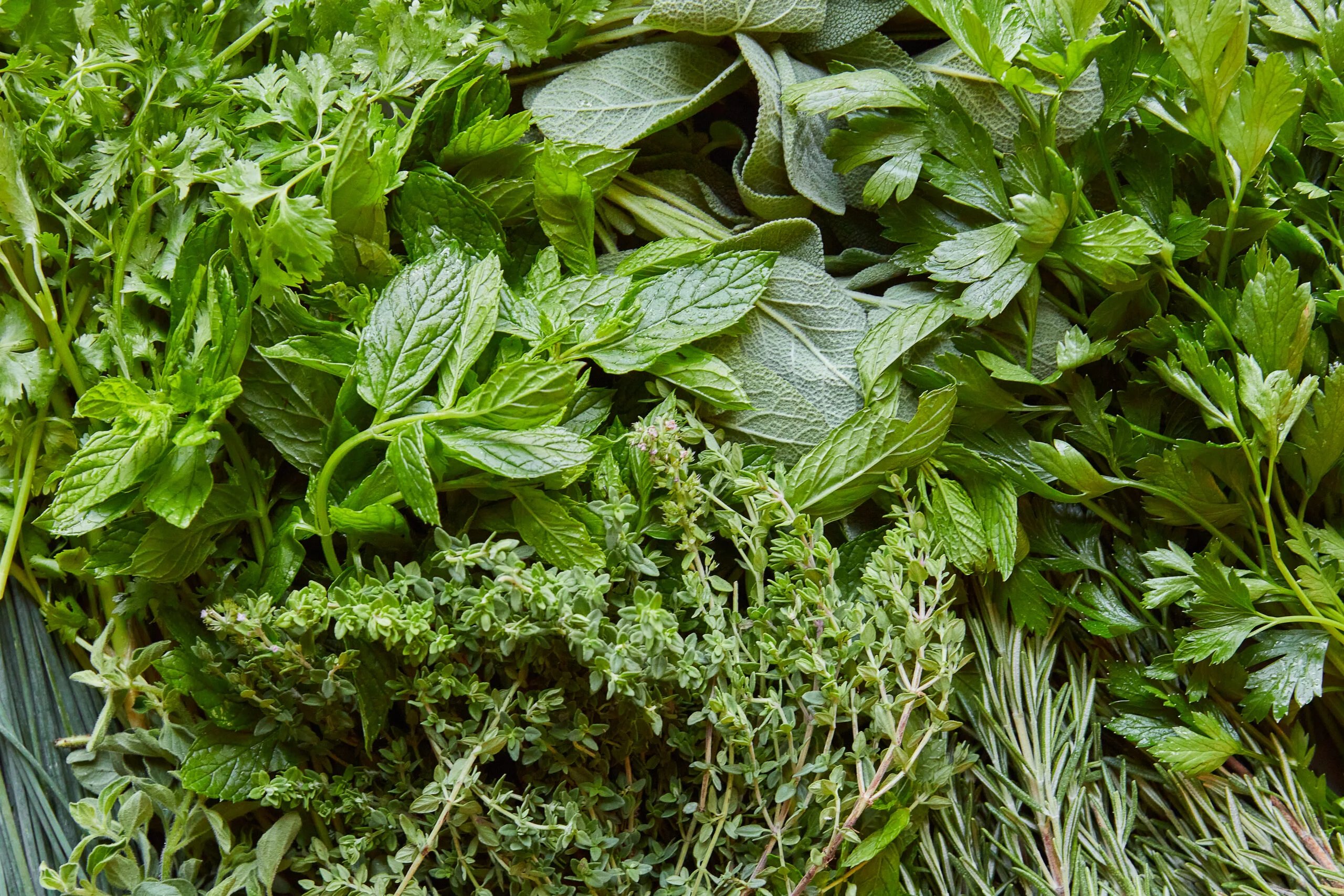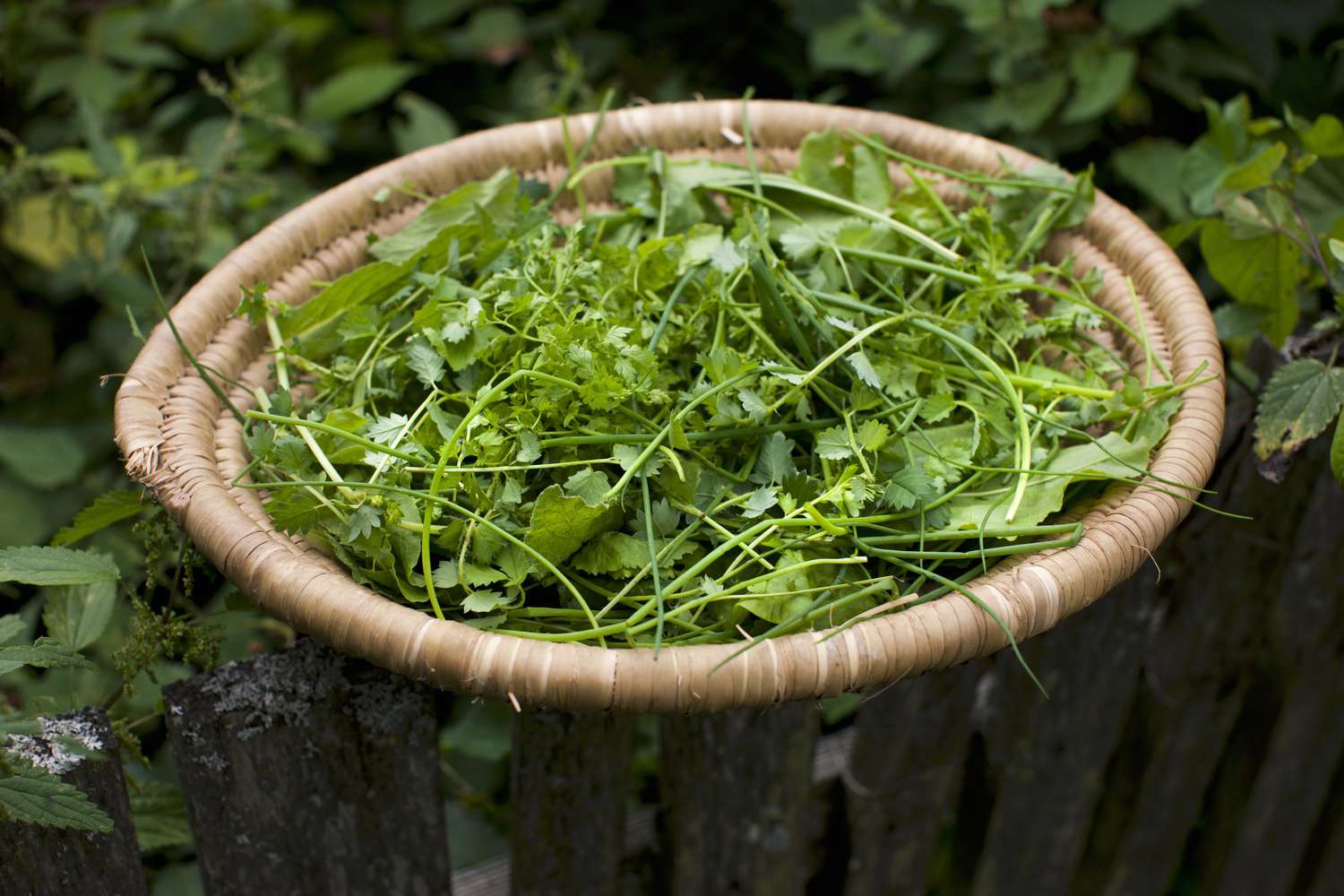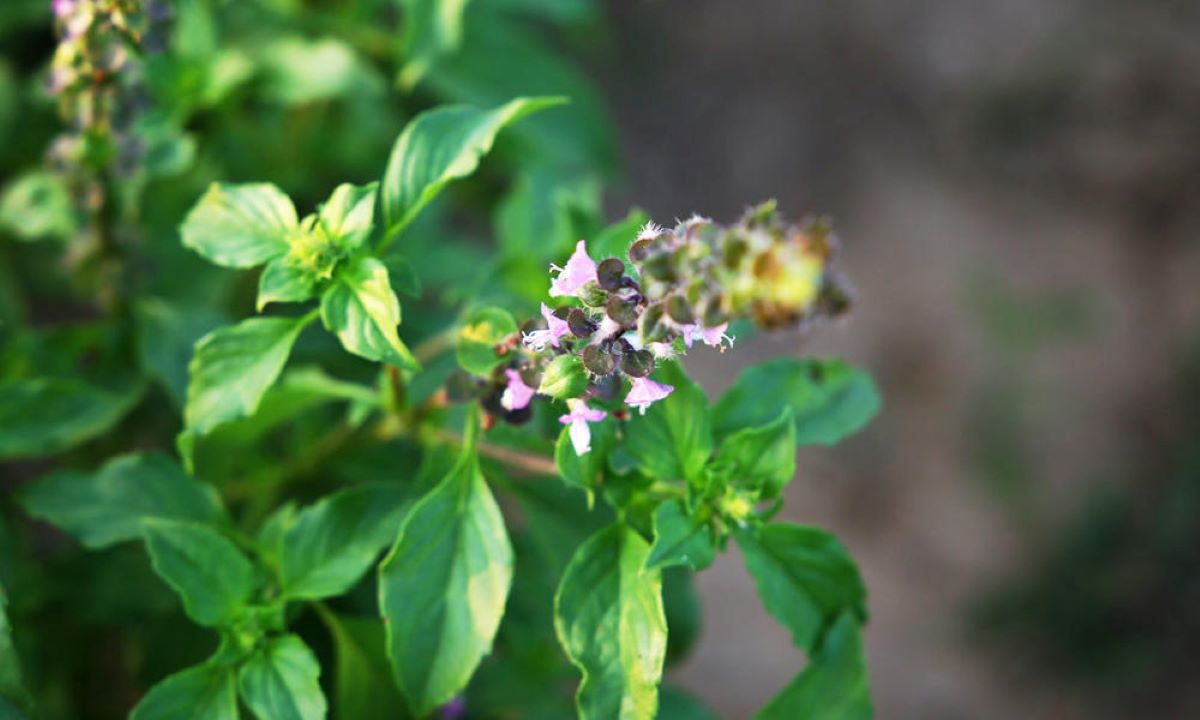Home>Gardening News and Trends>Gardening Trends>What Herbs Are High In Magnesium
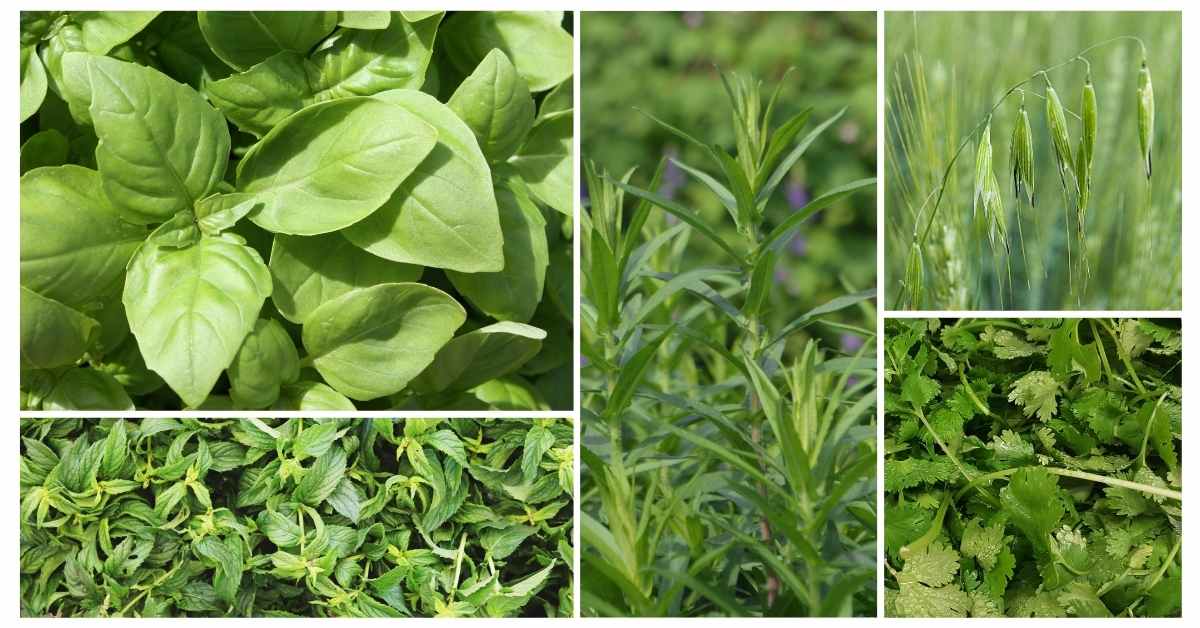

Gardening Trends
What Herbs Are High In Magnesium
Modified: January 22, 2024
Discover the top herbs that are rich in magnesium and learn how to incorporate them into your gardening routine. Explore the latest gardening trends for a healthy and nutritious harvest.
(Many of the links in this article redirect to a specific reviewed product. Your purchase of these products through affiliate links helps to generate commission for Chicagolandgardening.com, at no extra cost. Learn more)
Table of Contents
Introduction
Gardening is not only a fulfilling hobby but also a way to grow fresh and nutritious ingredients right in your own backyard. As gardening trends continue to evolve, it’s important to stay informed about the latest practices and techniques to make the most of your gardening experience. One of the emerging trends in gardening is the focus on growing herbs that are high in magnesium.
Magnesium is an essential mineral that plays a crucial role in various bodily functions. It is involved in over 300 biochemical reactions in the body, including muscle and nerve function, energy production, and maintaining a healthy immune system. Unfortunately, many people do not get enough magnesium in their diets, leading to potential deficiencies.
Fortunately, incorporating herbs high in magnesium into your garden can be a simple and effective way to boost your magnesium intake. Not only are these herbs packed with this vital mineral, but they also offer a delicious and aromatic addition to your culinary creations.
In this article, we will explore some of the top herbs that are high in magnesium for you to consider growing in your garden. From leafy greens to aromatic herbs, these plants can thrive in various growing conditions and provide you with an abundant supply of magnesium-rich goodness.
Why is Magnesium Important?
Magnesium is often referred to as the “master mineral” due to its involvement in numerous vital functions within the body. It plays a crucial role in maintaining overall health and well-being. Here are a few reasons why magnesium is so important:
1. Supports Bone Health: Magnesium is essential for proper bone formation and maintenance. It contributes to the structural development of bones and helps regulate calcium levels in the body. A deficiency in magnesium can lead to weaker bones and an increased risk of osteoporosis.
2. Promotes Heart Health: Magnesium is involved in maintaining a healthy cardiovascular system. It helps regulate blood pressure, reduces the risk of heart disease and stroke, and supports normal heart rhythm. Adequate magnesium levels are crucial for optimal heart function.
3. Enhances Muscle Function: Magnesium is necessary for muscle contraction and relaxation. It aids in the transmission of signals between nerves and muscles, helping to prevent muscle cramps and spasms. Athletes and individuals involved in physically demanding activities can benefit from maintaining adequate magnesium levels.
4. Supports Energy Production: Magnesium is an essential cofactor in the production of ATP (adenosine triphosphate), the main energy source for our cells. It plays a vital role in converting glucose into usable energy, ensuring proper metabolism and overall energy levels.
5. Regulates Nervous System: Magnesium helps regulate neurotransmitter functions and supports a healthy nervous system. It aids in reducing stress, anxiety, and promoting relaxation. Adequate magnesium levels have been linked to improved cognitive function and better sleep quality.
6. Boosts Immune System: Magnesium supports a strong immune system by regulating immune cell function and promoting antibody production. It also plays a role in inflammatory response, helping the body maintain proper defense against infections and diseases.
7. Regulates Blood Sugar Levels: Magnesium helps regulate blood sugar levels by influencing insulin secretion and glucose utilization. It aids in maintaining stable blood sugar levels, reducing the risk of insulin resistance, and diabetes.
Ensuring an adequate intake of magnesium through diet and supplementation is essential for maintaining optimal health. Growing herbs that are naturally high in magnesium is a great way to incorporate this vital mineral into your daily routine.
Herbs High in Magnesium
When it comes to growing herbs that are high in magnesium, you have plenty of delicious options to choose from. These herbs not only provide a rich source of magnesium but also add flavor and aroma to your culinary creations. Let’s explore some of the top herbs known for their magnesium content:
- Spinach: Spinach is a nutrient-dense leafy green that is not only high in magnesium but also packed with other essential vitamins and minerals. You can enjoy fresh spinach in salads, sautéed as a side dish, or added to smoothies for a boost of magnesium.
- Swiss Chard: Swiss chard is another leafy green that is abundant in magnesium. This colorful and versatile herb can be used in salads, stir-fries, or even as a wrap for your favorite fillings. It adds a delightful crunch and a healthy dose of magnesium to your meals.
- Basil: Known for its distinct and aromatic flavor, basil is not only a staple in many cuisines but also a good source of magnesium. You can use fresh basil leaves in pasta sauces, salads, or make your own homemade pesto for a burst of flavor and magnesium-rich goodness.
- Dill: Dill is a flavorful herb with a unique taste that complements various dishes. It is not only a good source of magnesium but also provides antioxidants and anti-inflammatory properties. Use fresh dill to season fish, salads, or add it to homemade pickles for a tangy and magnesium-rich snack.
- Parsley: Often used as a garnish, parsley is more than just a decorative herb. It is also rich in magnesium and other important nutrients. Add fresh parsley to soups, stews, or use it as a topping for roasted vegetables to enhance the flavor while boosting your magnesium intake.
- Coriander (Cilantro): Coriander, also known as cilantro, is a popular herb used in many cuisines around the world. It contains a good amount of magnesium and adds a refreshing and citrusy flavor to dishes. Use coriander leaves in salsas, curries, or as a garnish for an extra dose of magnesium.
- Peppermint: Peppermint is a cooling herb with a delightful aroma and taste. It is not only soothing for digestion but also a good source of magnesium. Brew a fresh cup of peppermint tea or add fresh mint leaves to salads, desserts, or smoothies for a flavorful and magnesium-rich treat.
- Sage: Sage is a versatile herb that adds a distinct earthy flavor to dishes. It is also a good source of magnesium and provides antioxidant properties. Use fresh or dried sage leaves to season roasted meats, vegetable dishes, or infuse it into homemade teas for a touch of magnesium-rich goodness.
- Oregano: Oregano is a flavorful herb used in Mediterranean and Italian cuisines. It is not only rich in magnesium but also provides antibacterial and antiviral properties. Sprinkle fresh or dried oregano on pizzas, pasta sauces, or roasted vegetables to add a savory taste and boost your magnesium intake.
- Thyme: Thyme is an aromatic herb with a bold and savory flavor. It is rich in magnesium and offers antioxidant and antimicrobial properties. Use fresh or dried thyme leaves in roasted meats, soups, or homemade stocks to infuse your dishes with a magnesium-rich punch.
By incorporating these magnesium-rich herbs into your garden, you can elevate your meals while reaping the benefits of this essential mineral. Experiment with different combinations and explore the diverse flavors and aromas that these herbs offer.
Spinach
Spinach is a versatile and nutrient-dense leafy green that is not only delicious but also a great source of magnesium. This vibrant and verdant herb is easy to grow and can be enjoyed in various culinary creations. Here’s why you should consider adding spinach to your garden:
Magnesium Content: Spinach is renowned for its high magnesium content. Just one cup of cooked spinach provides approximately 157 milligrams of magnesium, making it an excellent addition to your diet if you’re looking to increase your magnesium intake.
Health Benefits: Consuming spinach regularly offers a range of health benefits. In addition to its magnesium content, spinach is rich in vitamins A, C, and K, as well as iron, calcium, and antioxidants. These nutrients contribute to healthy bones, a strong immune system, and improved overall well-being.
Easy to Grow: Spinach is a cool-season crop that can be grown in both spring and fall. It thrives in moist, well-drained soil and prefers cooler temperatures. You can start spinach seeds indoors and transplant them outdoors, or sow them directly into the garden. With proper care and maintenance, you can have a bountiful harvest of fresh spinach leaves.
Versatility in Cooking: Spinach is incredibly versatile in the kitchen. You can enjoy it raw in salads, sautéed as a side dish, or added to soups, stews, and pasta dishes. It pairs well with a variety of ingredients, including garlic, lemon, feta cheese, and pine nuts. The mild flavor of spinach enhances the taste of your favorite recipes while providing a healthy dose of magnesium.
Storage and Preservation: Spinach can be harvested by picking individual leaves or by cutting the entire plant. It is best to harvest spinach when the leaves are young and tender. To store spinach, wash and dry the leaves thoroughly, then place them in a plastic bag or airtight container in the refrigerator. Properly stored spinach can stay fresh for up to a week.
Incorporating spinach into your garden is a wonderful way to ensure a fresh supply of this magnesium-rich herb. Whether you’re using it in salads, sautéing it as a side dish, or incorporating it into various recipes, spinach is a versatile and nutritious addition to any meal.
Swiss Chard
Swiss chard is a vibrant and nutritious leafy green that is not only visually appealing but also rich in magnesium. This versatile herb is easy to grow and offers a multitude of health benefits. Here’s why you should consider adding Swiss chard to your garden:
Magnesium Content: Swiss chard is known for its high magnesium content. It provides approximately 150 milligrams of magnesium per cooked cup, making it an excellent choice for those looking to boost their magnesium intake. Including Swiss chard in your diet can help support your overall health and well-being.
Colorful and Nutrient-Dense: Swiss chard comes in a variety of colors, including vibrant green, red, and rainbow hues. The colorful stems and dark green leaves indicate an abundance of vitamins and minerals. Swiss chard is rich in vitamins A, C, and K, as well as iron, calcium, and fiber. These nutrients contribute to healthy bones, improved eyesight, and a strong immune system.
Easy to Grow: Swiss chard is a versatile and low-maintenance herb that can thrive in various growing conditions. It prefers full sun or partial shade and well-drained soil. Swiss chard can be grown from seeds or transplants and is an excellent choice for beginner gardeners. With regular watering and some light fertilization, you can enjoy a bountiful harvest of this nutritious herb.
Culinary Uses: Swiss chard is a versatile culinary herb that can be used in a variety of dishes. The leaves can be enjoyed raw in salads or added to sandwiches for a fresh and nutritious crunch. The stems, which have a slightly milder flavor, can be sautéed, grilled, or pickled. Swiss chard pairs well with garlic, lemon, olive oil, and can be incorporated into stir-fries, pasta dishes, and frittatas.
Storage and Preservation: To store Swiss chard, remove any damaged or wilted leaves, wash the remaining leaves thoroughly, and dry them gently. You can store Swiss chard in a plastic bag or airtight container in the refrigerator, keeping it fresh for up to a week. It’s best to use Swiss chard as soon as possible after harvesting to enjoy its maximum flavor and nutritional benefits.
By growing Swiss chard in your garden, you’ll have a fresh and abundant supply of this magnesium-rich herb at your fingertips. Whether you’re adding it to salads, sautéing it as a side dish, or incorporating it into various recipes, Swiss chard is a colorful and nutritious addition to any meal.
Basil
Basil is a fragrant and flavorful herb that is not only a staple in many cuisines but also a good source of magnesium. This versatile herb is easy to grow and offers a range of health benefits. Here’s why you should consider adding basil to your herb garden:
Magnesium Content: Basil contains a decent amount of magnesium, with approximately 24 milligrams per 100 grams of fresh leaves. While it may not have a high magnesium content compared to some other herbs and greens, basil’s distinct flavor and aroma make it a delightful addition to various dishes.
Health Benefits: Basil offers numerous health benefits in addition to its magnesium content. It is rich in antioxidants, vitamins A, K, and C, and essential oils. These components provide anti-inflammatory properties, support cardiovascular health, and strengthen the immune system.
Easy to Grow: Basil is a relatively easy herb to grow in your garden or even in containers. It thrives in warm and sunny weather, making it ideal for outdoor cultivation during the summer months. Basil can be grown from seeds or purchased as seedlings from a nursery. With regular watering and well-drained soil, you can enjoy a steady supply of fresh basil leaves.
Culinary Uses: Basil is well-known for its versatile use in culinary dishes. Its sweet and slightly peppery flavor complements a wide range of ingredients. Use fresh basil leaves to enhance the taste of salads, pasta dishes, pizza, soups, and even desserts. Basil also plays a key role in popular dishes like pesto sauce and Caprese salad.
Preservation and Storage: To preserve the flavor of basil, it is best to harvest the leaves just before flowering. You can use the leaves immediately or store them for later use. To store basil, wrap the leaves in a damp paper towel and place them in a plastic bag. Alternatively, you can freeze the leaves by chopping them and placing them in an ice cube tray with a little olive oil or water. Frozen basil can be added directly to your cooked dishes without losing its flavor.
Having a pot of basil in your garden allows you to enjoy its fresh flavor and aroma whenever you desire. Whether you’re using it as a garnish, seasoning, or key ingredient, basil adds a delightful touch of fragrance and taste to your culinary creations.
Dill
Dill is a flavorful herb with feathery leaves and a distinctive taste that is not only popular in culinary dishes but also a good source of magnesium. This versatile herb is relatively easy to grow and offers a range of health benefits. Here’s why you should consider adding dill to your herb garden:
Magnesium Content: Dill contains a fair amount of magnesium, with approximately 55 milligrams per 100 grams of fresh leaves. While it may not have the highest magnesium content compared to some other herbs, dill’s unique flavor and aroma make it a delightful addition to various dishes.
Health Benefits: In addition to its magnesium content, dill offers various health benefits. It is known for its antioxidant and anti-inflammatory properties, which can help reduce the risk of chronic diseases. Dill also contains essential oils that have antimicrobial and digestive properties.
Easy to Grow: Dill is a hardy herb that is relatively easy to grow in your garden. It prefers a sunny location with well-drained soil. Dill can be grown from seeds and thrives in both outdoor gardens and containers. It is a great addition to any herb garden, and with proper care, you can enjoy a continuous harvest of fresh dill leaves.
Culinary Uses: Dill is widely used in culinary dishes, particularly in pickling and seafood recipes. Its fresh and tangy flavor pairs well with cucumbers, tomatoes, fish, and potatoes. Fresh dill leaves can be used to season salads, soups, dips, and sauces. Dill is also a key ingredient in making homemade pickles, giving them a distinct and flavorful taste.
Preservation and Storage: To preserve dill, it is best to harvest the leaves before the plant begins to flower. You can use the fresh leaves immediately or store them for later use. To store fresh dill, place the stems in a container with water, cover them with a plastic bag, and store them in the refrigerator. Alternatively, you can dry the dill leaves by hanging them upside down in a warm and well-ventilated area. Dried dill can be stored in an airtight container for future use.
By growing dill in your garden, you can easily access fresh leaves to enhance the flavor of your culinary creations. Whether you’re using it in pickling, seafood dishes, or as a seasoning, dill adds a unique and refreshing taste to your recipes, along with a touch of magnesium-rich goodness.
Parsley
Parsley is a versatile herb that is not only a popular garnish but also a good source of magnesium. With its vibrant, green leaves and fresh flavor, parsley can elevate the taste of various dishes. Here’s why you should consider adding parsley to your herb garden:
Magnesium Content: Parsley contains a moderate amount of magnesium, providing approximately 50 milligrams per 100 grams of fresh leaves. While it may not have the highest magnesium content among herbs, parsley’s versatility and nutritional profile make it a valuable addition to your diet.
Rich in Nutrients: Parsley is not only a good source of magnesium but also rich in vitamins A, C, and K. It also contains antioxidants, fiber, and folic acid. Parsley’s nutritional profile contributes to bone health, strong immunity, and overall well-being.
Easy to Grow: Parsley is a hardy herb that is relatively easy to grow in your garden. It prefers well-drained soil and can tolerate both full sun and partial shade. You can start parsley from seeds or buy starter plants from a local nursery. With regular watering and proper care, you can have a bountiful supply of fresh parsley throughout the growing season.
Culinary Uses: Parsley is a versatile herb that can be used in a variety of dishes. It is commonly used as a garnish but can also be used as a flavor enhancer. Add chopped parsley to salads, soups, stews, marinades, and sauces to provide a fresh and vibrant taste. Parsley pairs well with garlic, lemon, olive oil, and can be used in both cooked and raw dishes.
Preservation and Storage: To store parsley, remove any damaged leaves and trim the stems. Place the parsley in a jar or glass with some water, just like you would with a bouquet of flowers. Cover the leaves with a plastic bag and store it in the refrigerator. Alternatively, you can freeze parsley by washing and drying the leaves, chopping them, and placing them in an airtight container or freezer bag.
Parsley is a versatile herb that adds freshness and flavor to a wide range of dishes. By growing parsley in your garden, you’ll have a readily available source of this magnesium-rich herb that can enhance the taste and nutritional value of your meals.
Coriander (Cilantro)
Coriander, also known as cilantro, is a herb that is widely used in various cuisines around the world. Aside from its distinct flavor and aroma, coriander is also known for being a good source of magnesium. Here’s why you should consider adding coriander to your herb garden:
Magnesium Content: Coriander leaves contain a decent amount of magnesium, offering approximately 26 milligrams per 100 grams of fresh leaves. While it may not be the highest among herbs, the unique flavor and versatility of coriander make it a valuable addition to your culinary repertoire.
Rich in Antioxidants: Coriander is rich in antioxidants, which help protect the body against free radicals and oxidative stress. It also contains essential oils that give it its distinctive flavor and aroma.
Flavorful and Versatile: Coriander is renowned for its fresh, citrus-like flavor, with hints of parsley and mint. It can be used in both Asian and Mediterranean cuisines, adding depth and complexity to dishes. Coriander leaves are commonly used as a garnish, but they can also be incorporated into salads, salsas, dressings, curries, and sauces.
Easy to Grow: Coriander is relatively easy to grow, making it a suitable herb for both beginner and experienced gardeners. It prefers well-draining soil and partial sunlight. Coriander can be grown from seeds and is best sown directly in the garden as it does not transplant well. With proper care and regular watering, you can enjoy a continuous harvest of fresh coriander leaves.
Preservation and Storage: To store coriander, trim the stems and keep them in a glass of water, similar to how you would keep fresh flowers. Cover the leaves loosely with a plastic bag and store them in the refrigerator. Alternatively, you can preserve coriander leaves by finely chopping them and freezing them in ice cube trays with a little water. This way, you can easily add coriander to your dishes whenever needed.
With its unique flavor and nutritional benefits, growing coriander in your herb garden is a great way to enhance the taste of your meals while incorporating a magnesium-rich herb into your diet. Whether used as a garnish or a key ingredient, coriander adds a fresh and vibrant touch to a wide array of dishes.
Peppermint
Peppermint is a popular herb known for its refreshing aroma and cooling sensation. Besides being a delightful addition to various dishes and beverages, peppermint is also a good source of magnesium. Here are some reasons why you should consider adding peppermint to your herb garden:
Magnesium Content: Peppermint contains a notable amount of magnesium, providing approximately 47 milligrams per 100 grams of fresh leaves. This makes it a valuable herb to incorporate into your diet to boost your magnesium intake.
Calming and Digestive Properties: Peppermint has long been associated with soothing properties that can promote relaxation and aid in digestion. It is commonly used to alleviate indigestion, bloating, and gastrointestinal discomfort. Drinking peppermint tea or incorporating fresh peppermint leaves into your meals can help support a healthy digestive system.
Flavorful and Versatile: Peppermint has a distinct taste and aroma, characterized by its menthol flavor. It can be used in both sweet and savory dishes. Add fresh peppermint leaves to teas, beverages, smoothies, or desserts for a refreshing and minty twist. Peppermint also pairs well with chocolate, lemon, and fruits like strawberries and watermelon.
Ease of Growing: Peppermint is a hardy herb that is relatively easy to grow in your garden. It can be grown from seeds or propagated from cuttings, making it a practical addition to your herb garden. Peppermint thrives in moist, well-drained soil and partial sunlight. Be cautious when planting peppermint directly in the ground, as it tends to spread rapidly. Consider growing it in containers to control its growth.
Preservation and Storage: To store peppermint, harvest the leaves as needed. You can use them fresh or dry them for later use. To dry peppermint, tie the stems together and hang them upside down in a warm and well-ventilated area. Once dried, store the leaves in an airtight container away from direct sunlight. Alternatively, you can freeze peppermint leaves by chopping them and placing them in ice cube trays with a small amount of water.
By growing peppermint in your herb garden, you’ll have a readily available source of this magnesium-rich herb to incorporate into your meals and beverages. Enjoy the refreshing flavor and potential health benefits that peppermint brings to your culinary creations, while reaping the magnesium goodness it provides.
Sage
Sage is a versatile herb known for its distinct aroma and robust flavor. Not only does sage add depth to various dishes, but it also offers a decent amount of magnesium. Here are some reasons to consider growing sage in your herb garden:
Magnesium Content: Sage contains a decent amount of magnesium, providing around 43 milligrams per 100 grams of fresh leaves. While not the highest among herbs, sage’s flavor and versatility make it a valuable addition to your meals.
Rich in Antioxidants: Sage is packed with antioxidants, which play a crucial role in reducing oxidative stress and promoting overall health. These antioxidants contribute to sage’s potential anti-inflammatory and antimicrobial properties.
Robust Flavor: Sage has a distinct flavor that adds a robust and savory punch to dishes. Its earthy, slightly peppery taste pairs well with poultry, pork, roasted vegetables, and sauces. Sage leaves can be used fresh or dried, providing flavor throughout the year.
Medicinal Benefits: Sage has been used for centuries for its potential medicinal benefits. It is believed to improve memory and cognitive function, soothe sore throats, and aid in digestion. Sage tea is a popular herbal remedy for various ailments.
Easy to Grow: Sage is a hardy herb that is relatively easy to grow in your herb garden. It thrives in well-drained soil, abundant sunlight, and moderate water conditions. Sage plants can withstand drought, making them a low-maintenance addition to your garden.
Preservation and Storage: To store sage, harvest the leaves at any time during the growing season. Fresh sage leaves can be used immediately or stored for later use. To dry sage, gather the stems into small bundles and hang them upside down in a cool, well-ventilated area. Once dried, separate the leaves and store them in an airtight container away from light and moisture.
With its distinct flavor and potential health benefits, sage is a versatile herb to include in savory dishes and herbal remedies. By growing sage in your herb garden, you can have a ready supply of this magnesium-rich herb to enhance the taste and potential health benefits of your favorite recipes.
Oregano
Oregano is a flavorful herb that is widely used in Mediterranean and Italian cuisines. Apart from its rich taste, oregano also offers a notable amount of magnesium. Here’s why oregano deserves a spot in your herb garden:
Magnesium Content: Oregano is known for its relatively high magnesium content, providing approximately 25 milligrams per 100 grams of fresh leaves. This makes it a valuable herb to incorporate into your diet to boost your magnesium intake.
Distinct Flavor: Oregano has a robust, slightly bitter taste that adds depth and complexity to dishes. It is particularly popular in tomato-based sauces, pasta dishes, pizzas, and Mediterranean-inspired recipes. Oregano’s flavor intensifies when dried, making it a pantry staple.
Antioxidant-Rich: Oregano is highly valued for its antioxidant properties, which help protect the body against free radicals and oxidative stress. It contains numerous phytochemicals that contribute to its potential anti-inflammatory and antimicrobial effects.
Easy to Grow: Oregano is a low-maintenance herb that is relatively easy to grow in your herb garden. It thrives in well-drained soil and can tolerate full sun exposure. Oregano can be started from seeds or purchased as young plants from a nursery. Regular pruning will keep the herb bushy and encourage new growth.
Preservation and Storage: To store fresh oregano, harvest the leaves just before the plant begins to flower. Rinse them thoroughly, pat them dry, and store them in a breathable bag in the refrigerator. Alternatively, hang the stems upside down in a cool, well-ventilated area for drying. Once dried, store the leaves in an airtight container away from direct sunlight.
Oregano is a versatile herb that adds a delightful flavor to a wide range of dishes. By growing oregano in your herb garden, you’ll have easy access to this magnesium-rich herb, allowing you to enhance the taste and nutritional value of your culinary creations with ease.
Thyme
Thyme is a fragrant and versatile herb with a myriad of culinary uses. Beyond its delightful aroma and flavor, thyme also offers a notable amount of magnesium. Here’s why you should consider including thyme in your herb garden:
Magnesium Content: Thyme contains a decent amount of magnesium, providing approximately 42 milligrams per 100 grams of fresh leaves. While it may not have the highest magnesium content among herbs, thyme’s distinctive taste and versatility make it a valuable addition to your recipes.
Unique Flavor: Thyme has a distinct and slightly minty flavor with hints of lemon, making it a delicious addition to various dishes. It pairs well with poultry, fish, roasted vegetables, stews, soups, and sauces. Whether used fresh or dried, thyme adds depth and aroma to your culinary creations.
Antimicrobial Properties: Thyme has been recognized for its antimicrobial properties, thanks to the presence of compounds such as thymol and carvacrol. These compounds contribute to thyme’s potential antibacterial and antifungal effects. Thyme has been traditionally used as a natural remedy for coughs, colds, and sore throats.
Easy to Grow: Thyme is a hardy herb that is relatively easy to grow in your herb garden. It thrives in well-drained soil, full sun, and moderate watering. Thyme plants are perennial and can be started from seeds or purchased as young plants from a nursery. With minimal care, thyme can provide a steady supply of fresh leaves throughout the growing season.
Preservation and Storage: To store fresh thyme, harvest the sprigs as needed and store them in a container with a small amount of water, similar to cut flowers. Alternatively, you can rinse and dry the sprigs, then place them in a paper towel or breathable bag in the refrigerator. Thyme can also be dried by hanging the sprigs upside down in a well-ventilated area. Once dried, remove the leaves from the stems and store them in an airtight container away from light and moisture.
Thyme is a versatile herb that lends its delightful flavor and aroma to a wide range of dishes. By growing thyme in your herb garden, you can enjoy the convenience of having this magnesium-rich herb on hand, elevating the taste and nutritional value of your favorite recipes.
Conclusion
Growing herbs that are high in magnesium is a fantastic way to enhance the taste and nutrition of your culinary creations while reaping the benefits of this essential mineral. From spinach and Swiss chard to basil and dill, each herb offers a unique flavor profile and a significant amount of magnesium to support your well-being.
Magnesium plays a vital role in various bodily functions, including bone health, muscle function, energy production, and immune system support. Unfortunately, many people do not get enough magnesium in their diets, making it essential to incorporate magnesium-rich herbs like parsley, coriander, and peppermint into our gardens and meals.
By cultivating these herbs in your garden, you have a readily available source of fresh and magnesium-rich goodness. Experiment with different recipes and combinations to elevate your culinary creations. Whether you’re adding spinach to your salads, infusing your dishes with the aroma of basil, or enjoying the refreshing taste of peppermint tea, these magnesium-rich herbs can contribute to your overall well-being.
Remember, the beauty of gardening lies not only in the satisfaction of growing your own food but also in the opportunity to nourish your body with fresh, nutritious ingredients. By incorporating herbs high in magnesium into your garden, you can embark on a culinary journey that not only delights your taste buds but also supports your health.
So, grab your gardening tools, sow the seeds, and watch as these herbs flourish in your backyard. Embrace the joy of harvesting and savor the flavors and benefits of these magnesium-rich herbs. Happy gardening and happy eating!
